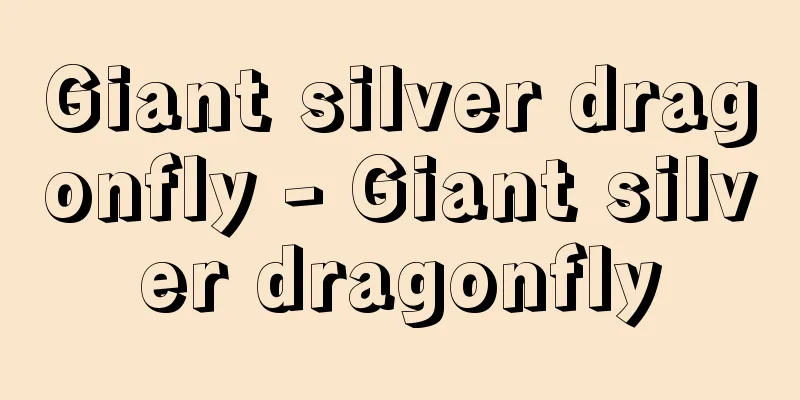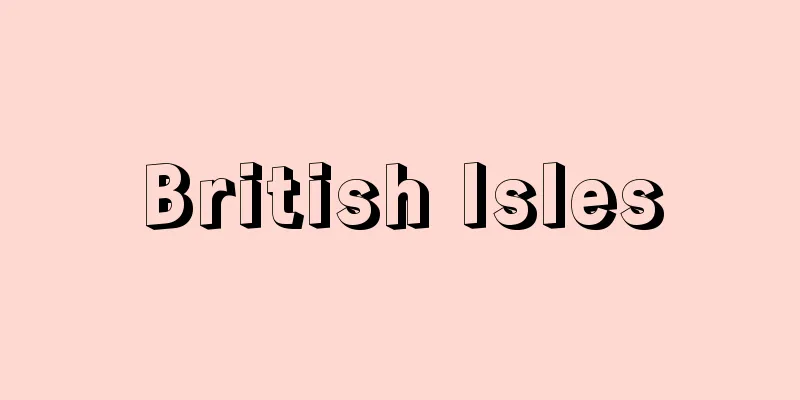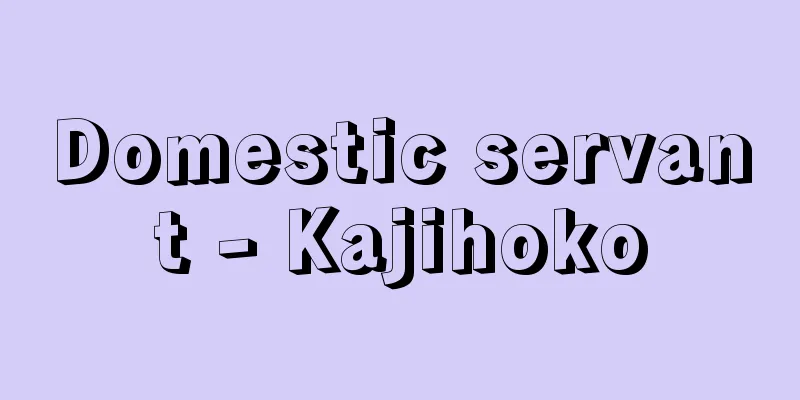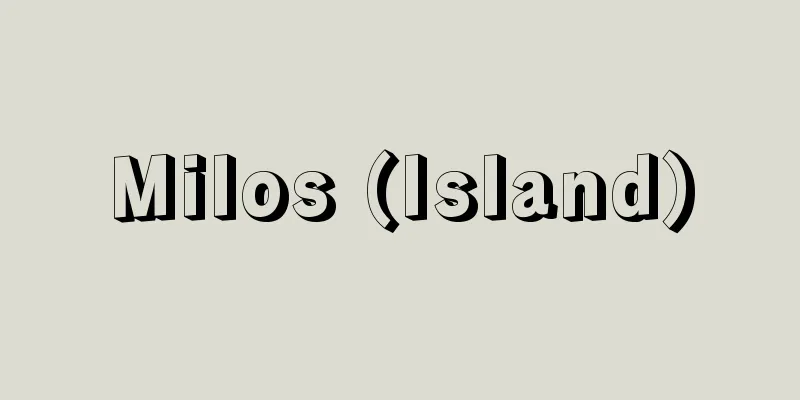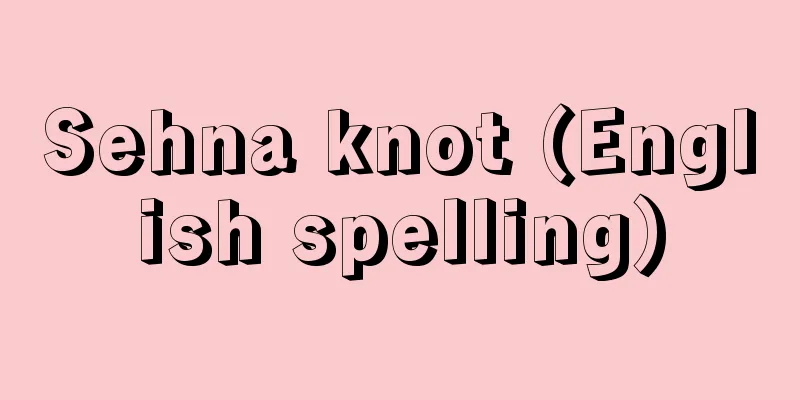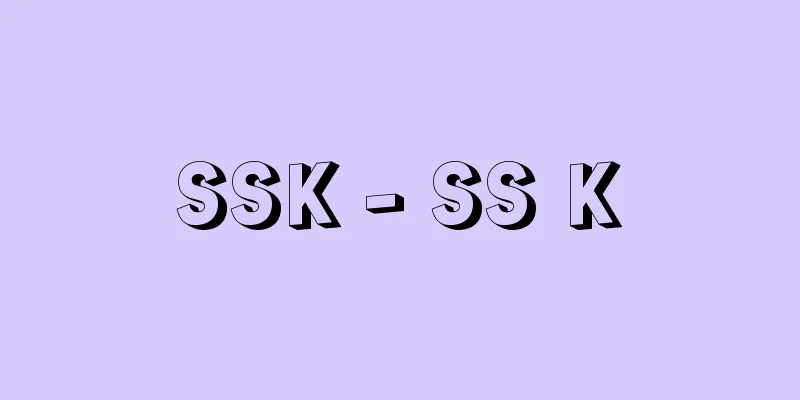Calligraphy - Shuji
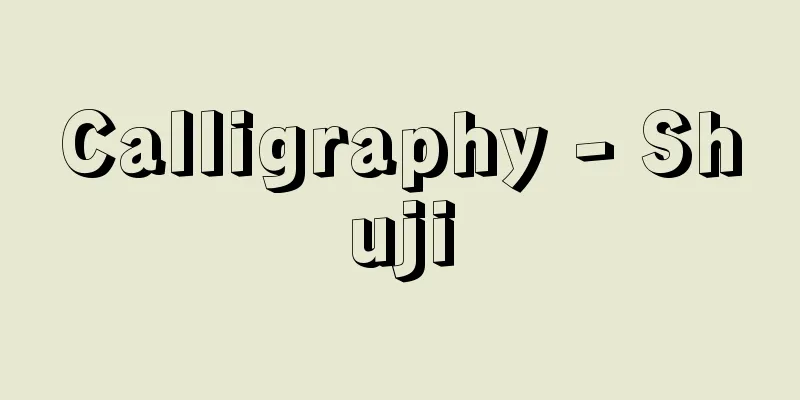
|
Learning to write. Also, the name of the former subject or field that includes that activity. It can also refer to the work that is the result of that activity. However, since 1958 (Showa 33), the term has been switched to "calligraphy" in school education. "Study" here means "looking at a model (example) and practicing repeatedly," aiming to be able to write beautifully by arranging characters. This activity has come to be called calligraphy by brush, hard-pen calligraphy, pen calligraphy, etc., depending on the tools used, and the practice of English letters has come to be called English calligraphy or Roman alphabet calligraphy. In English, the words for this are writing, handwriting, and penmanship. In general, the term "shuji" refers to the overall activity of writing with a brush, including the art of "calligraphy," or to the works that result from it. It is also sometimes referred to as "shuji" as a hobby, on the same level as "tea ceremony" or "flower arranging." It is also often confused with "shosha," or calligraphy, taught in elementary and junior high schools. Behind such confusion and misuse lies the following historical transition in school education. [Kome Ko] The transition from calligraphy to calligraphy in school educationFrom "Calligraphy" to "Shodo"The word "shuji" first appeared in the Muromachi period. From then on, it was widely used through the Terakoya education period and into the Meiji period, and was also pronounced "tenarai" in Japanese. In the Edo period, domain and local schools, other terms such as brush writing, shusho, shogaku, gakusho, and te-sura were used, but since everyday documents were written by hand at the time, no matter which term was used, it occupied a central position in education. Through calligraphy with a brush, students could learn about shotoku (letters), morality, literature, history, geography, business, and other practical and cultural studies necessary for life, and also aimed to acquire a foundation in calligraphy and to cultivate their minds. In other words, it was a place of comprehensive education. When the school system was established in 1872 (Meiji 5), following the tradition of temple school education up until that point, learning calligraphy with a brush was designated as the leading subject in both primary and secondary education, and called "shuji" (calligraphy). However, over the years, the influence of Western educational thought and the spread of movable type printing and hard pens weakened the comprehensive educational character and its position as a subject was relegated. In 1900 (Meiji 33), it was included in the Japanese language subject in elementary schools, and it was called "kakikata," a translation of the word "writing," and it shifted to being focused on writing techniques within the Japanese language subject. In secondary education, it also became "Japanese language subject shuji" the following year in 1901. As the Taisho period gave way to the Showa period, the practical role of calligraphy gradually diminished, while the artistic and spiritual aspects of education using calligraphy came to the forefront, and, coupled with the rise of imperialist ideology, in 1941 (Showa 16) the National School Act separated calligraphy from the Japanese language subject as an independent subject, called "artistic calligraphy." In 1943, it also became an independent subject in secondary schools as "artistic calligraphy." This was the first time that the term "calligraphy" was used as the name of a school subject. [Kome Ko] After World War IIAfter the war, in the new high schools, it was renamed "arts and crafts" (from 1960, "arts and crafts"), and it has remained that way to the present day. In the new junior high schools, it was once again positioned as a field of Japanese language, and the name "shuji" was restored and hard pen writing was added. Meanwhile, in elementary schools, calligraphy was abolished from Japanese language classes, and only hard pen writing came to be called "kakikata". In 1951 (Showa 26), as the postwar education system was coming into shape, the draft curriculum guidelines allowed elementary school students to study calligraphy under the name "shuji" as a school choice, in any grade from the 4th grade onwards. Then, in the revised curriculum guidelines of 1958, the name was unified to "shosha", which refers to learning with both hard pen and calligraphy. From this point on, the name "shuji" disappeared from school education. In the 1968 (Showa 43) revised elementary school curriculum guidelines, learning to use a calligraphy brush in addition to a hard pen was made compulsory for about 20 hours a year for students in the third grade and above. In the 1977 revised elementary school curriculum guidelines, calligraphy using both a hard pen and a soft pen was classified as a "language matter." The 1989 (Heisei 1) revised elementary school curriculum guidelines stated the following regarding its handling: "Instruction in calligraphy using a soft pen will be given to students in each grade from the third grade onwards, and instruction will be given to foster the basic ability to write using a hard pen, so that students will be able to write characters in a correct order. In addition, the number of class hours allocated to instruction in calligraphy using a soft pen will be about 35 unit hours per year for each grade. Consideration should also be given to giving special attention to hard pen instruction, linking it to soft pens." In the junior high school curriculum guidelines, calligraphy using hard pens and brushes was moved from the "expression" area to the "language" area, just like in elementary schools, and it was made clear that "the number of class hours should be about 35 unit hours for first graders, and 15 to 20 unit hours for each of the second and third grades." In the subsequent revision in 1998, the content and number of hours were slightly reduced, and the guidelines have remained in place to this day. [Kome Ko] "Japanese Textbook Encyclopedia, Volume 27, Modern Edition, edited by Kaigo Muneomi (1967, Kodansha) " ▽ "Materials on the History of Calligraphy and Calligraphy Education, edited by Abo Naohiko et al. and supervised by Kato Tatsunari, 3 volumes (1984, Tokyo Horei Publishing)" ▽ "Japanese Language Education Research Institute, edited by Japanese Language Education Research Dictionary (1988, Meiji Tosho Publishing)" ▽ "Outline of Calligraphy and Calligraphy Education, written by Kume Ko (1989, Kayahara Shobo)" ▽ "Brush Calligraphy Dictionary, edited by Tsuzuki Kozan, new edition (1991, Kyoiku Publishing)" ▽ "Calligraphy Encyclopedia, edited by Abo Naohiko (1991, Mokujisha Publishing)" ▽ "Outline of Calligraphy Education, edited by the New Calligraphy Education Research Association Outline Editorial Committee, revised 2nd edition (1993, Gyosei)" ▽ "New Dictionary of Calligraphy Education - Theory and Practice" by Kamijo Shinzan (1993, Mokujisha)" ▽ "Dictionary of Japanese Language Education edited by the Japan Association for Language Education (2001, Asakura Shoten)" ▽ "New Edition of Calligraphy Instruction edited by the National University Association for Calligraphy Education (2003, Kayahara Shobo)" [Reference] | | |Source: Shogakukan Encyclopedia Nipponica About Encyclopedia Nipponica Information | Legend |
|
文字を習うこと。またその活動を内容としたかつての教科・分野の呼称。あるいは、それら活動の成果としての作品をいうこともある。ただし、1958年(昭和33)以降学校教育では「書写」の呼称に切り替えられている。 ここでいう「習う」とは「規範(手本)をみて繰り返し練習すること」であり、それによって文字を整えて美しく書けるようになることを目ざす。その活動を、用具のうえから毛筆習字、硬筆習字、ペン習字などといったり、英字の練習を英習字とかローマ字習字などといったりしてきている。英語ではライティングwriting、ハンドライティングhandwriting、ペンマンシップpenmanshipの語が相当する。 一般には、習字といえば、芸術としての「書」も包括した毛筆によって書かれた活動全般、あるいはその作品をさしていうことがある。また「お茶」「お花」などと同列にお稽古ごととして「お習字」と俗称している場合もある。また、小学校・中学校で行われている「書写」と混用させていることも多い。それら混用・誤用の背後には、次のような学校教育における歴史的変遷が潜在する。 [久米 公] 学校教育における習字から書写への変遷「習字」から「書道」へ「習字」の語は室町時代に初出する。以降、寺子屋教育時代を経て明治時代まで広く用いられ「てならい」と訓読みもされてきた。江戸時代の藩学や郷学では筆道、習書、書学、学書、手習などの別語も行われたが、当時は日常の文書が筆書によっていたので、どの用語の場合でも、教育の中心の位置を占めていた。毛筆による習字を通して書牘(しょとく)(手紙)、修身・道徳、文学、歴史、地理、実業、その他生活に必要とされる実学や教養を身につけ、あわせて書の素養の修得および精神修養も目ざすという、いわば総合教育の場であった。 1872年(明治5)の学制施行にあたって、それまでの寺子屋教育の歩みを受けて、初等教育、中等教育とも毛筆による学習は「習字」の呼称で筆頭教科として位置づけられた。しかし、年とともに、欧米の教育思潮の影響と、活字印刷および硬筆の普及に押されて総合教育的な性格を薄くし、教科的位置を後退させた。1900年(明治33)には小学校では国語科のなかに包括され、ライティングの訳語の「書キ方」の呼称で、国語科のなかで書字技法を中心に扱われるように移行した。中等教育でも翌1901年に「国語科習字」となった。 大正時代から昭和時代へと移るにつれて、毛筆が実用としての役割をしだいに小さくしていくその一方で、芸術的側面と毛筆による教育の果たす精神陶冶(とうや)的側面がクローズアップされるようになり、皇国主義思潮の台頭とも絡んで、1941年(昭和16)の国民学校令では、国語科から離れて「芸能科習字」として独立。43年には中等学校でも「芸能科書道」となって独立。「書道」の呼称が教科名として学校教育に初出することになった。 [久米 公] 第二次世界大戦後戦後、新発足した新制の高等学校では、そのまま「芸能科書道」となり(1960年からは「芸術科書道」)、現在に至っている。新制の中学校ではふたたび国語科の領域分野に位置づけられ、「習字」の呼称に復帰して硬筆を加えて行うようになった。一方、小学校では国語科のなかで毛筆が廃され、硬筆のみ「書き方」の呼称で行われるようになった。戦後の教育体制が整うようになってきた1951年(昭和26)の学習指導要領試案から、小学校に毛筆による学習が「習字」の呼称のもと、学校選択という形で第4学年以上の適宜の学年で行ってもよいこととなった。ついで、58年改訂の学習指導要領から小学校、中学校ともに硬筆・毛筆による学習を内容とする「書写」の呼称に統一されることとなった。このとき以降「習字」の呼称が学校教育から消えることになったのである。 1968年(昭和43)改訂の小学校学習指導要領の書写では、硬筆のほかに毛筆による学習が、第3学年以上の学年で年間20時間程度必修となった。ついで、77年改訂の小学校学習指導要領では、硬筆・毛筆による書写は「言語事項」に位置づけられた。89年(平成1)改訂の小学校学習指導要領では、その取扱いについて「毛筆を使用する書写の指導は、第3学年以上の各学年で行い、硬筆による書写の能力の基礎を養うよう指導し、文字を正しく整えて書くことができるようにすること。また、毛筆を使用する書写の指導に配当する授業時数は、各学年年間35単位時間程度とすること。なお、硬筆についても、毛筆との関連を図りながら、とくに取り上げて指導するよう配慮すること」と示された。中学校の学習指導要領においても、硬筆・毛筆による書写は「表現」領域から小学校同様「言語領域」に位置を移し、「授業時数については、第1学年は35単位時間程度、第2学年及び第3学年は各学年15~20単位時間とすること」と明示された。その後、98年(平成10)の改訂では、内容と時間数をやや縮減させて、現在に至っている。 [久米 公] 『海後宗臣編『日本教科書大系第27巻 近代編』(1967・講談社)』▽『阿保直彦ほか編、加藤達成監修『書写・書道教育史資料』全3巻(1984・東京法令出版)』▽『国語教育研究所編『国語教育研究大辞典』(1988・明治図書出版)』▽『久米公著『書写書道教育要説』(1989・萱原書房)』▽『続木湖山編書『毛筆書写事典』新版(1991・教育出版)』▽『阿保直彦編『書道百科事典』(1991・木耳社)』▽『新書写教育研究会概要編集委員会編『書写教育概要』新訂2版(1993・ぎょうせい)』▽『上条信山著『新書写書教育事典――理論と実践』(1993・木耳社)』▽『日本国語教育学会編『国語教育辞典』(2001・朝倉書店)』▽『全国大学書写書道教育学会編『新編書写指導』(2003・萱原書房)』 [参照項目] | | |出典 小学館 日本大百科全書(ニッポニカ)日本大百科全書(ニッポニカ)について 情報 | 凡例 |
<<: Collection of characters - Shuuji
>>: Thirteenth night - Juusanya
Recommend
Aldan - Алдан/Aldan
The administrative center of Aldan District, Sakh...
Gold mark - Kinmaruku
…Germany traditionally had strong state power, an...
Tukulor - Tukulor (English spelling)
An ethnic group living in the semi-arid Fouta Toro...
Matuta banksii (English spelling)
… [Takeda Masatomo]. … *Some of the terminology t...
OA Law - O-E-HOU
…It is one of the coal washing techniques for coa...
Temporary Cohort - Kasetsu Cohort
...When calculating how many children a group of ...
Dewey, M.
… However, the increase in knowledge and books ma...
Bottle
…Here, I will only give a few examples that are e...
Kitakyushu [city] - Kitakyushu
A city in northern Fukuoka Prefecture. In February...
Nevis (island) (English spelling)
The island of St. Kitts and Nevis is part of the L...
Omura Bay - Omurawan
A bay in the center of mainland Nagasaki Prefectu...
Governor-General of Fort William in Bengal
…The post of Governor-General of India was create...
Gonzaga, L. (English spelling) GonzagaL
...In English, it is called baion. Originally a f...
Kinnamomum Cassia - Kinnamomum Cassia
… There are cinnamon species found in Yunnan, sou...
America Guide Series
...In France, the Guide Bleu by Louis Christophe ...
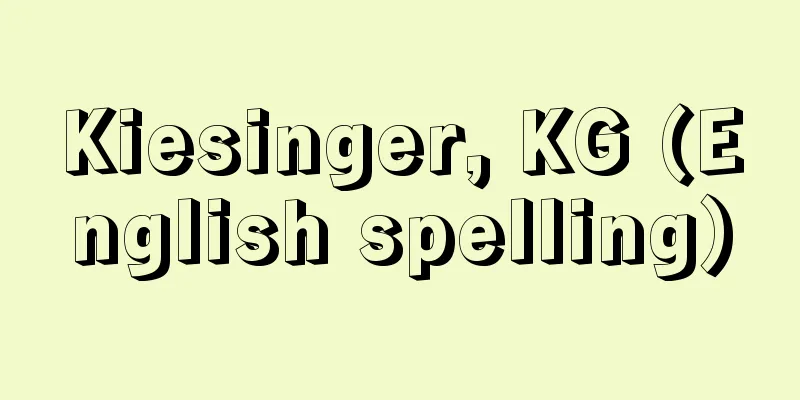

![Greyhound [Breed] - Greyhound](/upload/images/67cb7237adb60.webp)
